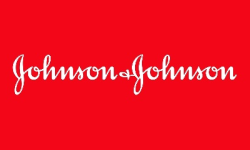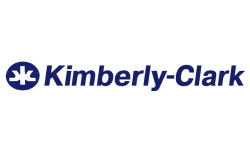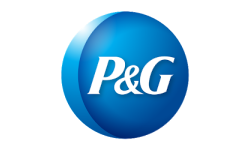
Global Botanical Supplements Market by Form (Tablets, Liquid), by Application (Energy & Weight Management, Anti-cancer), by Source (Flowers, Leaves) and Region (North America, Latin America, Europe, Asia Pacific and Middle East & Africa), Forecast To 2028
Summary of the Report
Global botanical supplements market was valued at USD 27.85 million in 2019. It is projected to grow at a compound annual rate (CAGR of 7.4%) between 2020 and 2027. There is tremendous potential for market growth due to increased innovation in manufacturing botanicals that include a wide range of amino acid and targeted functions such as weight loss, energy balance and muscle repair. Consumers are turning to health-improving botanical supplements due to rising health consciousness. Many manufacturers offer alternative treatments to women suffering from common problems such as hot flashes and insomnia. The most widely used botanical supplements are herbal offerings like detoxes, fish oils, probiotic drinks, and other herbal supplements.
A new survey by Nutritional Outlook found that prevention and immunity are the most important purchase drivers for botanical supplement consumers in the U.S.
61% of U.S. botanical supplement users state that they use more supplements to boost immunity. According to survey statistics, 44% of Americans who took botanical supplements in the United States stated that they had changed their diets because of the pandemic.
According to the American Botanical Council, ashwagandha sales grew in both U.S. mainstream and natural retail channels in 2018. Ashwagandha, which grew 16.9% to $12.5 Million, was the seventh most popular botanical supplement in the U.S. Natural Channel. It has also been among the top 40 most-sold ingredients in natural and herbal retail shops since 2015.
The demand for botanical supplements will rise due to increasing consumer openness to supplementation, availability of top-quality fitness infrastructure and high-income individuals, as well as growing investment in the sector. The product demand will be fueled by the large presence of key players such as Glanbia, Blackmores Limited and The Himalaya Drug Company.
There are many ingredients on the global market for nutritional and health food that can help athletes in a variety of areas. These plant-based ingredients can be used to improve the performance of athletes who are looking to boost their athletic training. Plant-based supplements are outselling their animal-sourced counterparts in the market.
Form Insights
Tablets dominated the market, accounting for 31.35% of global revenue in 2019. The segment has seen a rise in popularity due to its ease of use and increasing consumer preference for tablets and capsules. The demand for botanical supplements tablets has grown due to significant growth in emerging countries like China and India's pharmaceutical industries.
As nutraceutical companies continue to invest in energy-mix products for wellness and health, powder botanical supplements will likely remain a major product segment. Gummies offer significant growth potential because they are more appealing than traditional pills.
Due to growing demand from athletes and bodybuilders for energy-mixed powders, powder forms will see significant growth over the next few years. Amway and other dietary product manufacturers have included powder forms under the brand NUTRILITE. These products can be mixed with milk or drinks.
Due to their ease of use at retail stores, soft gels and gel caps product forms will find many applications. Powders and granules are also important formulations for the industry. Powder formulations can be found in higher concentrations and offer a greater rate of absorption than other forms. The segment's growth is also driven by the growing demand for botanical products such as tea bags in granule form.
Application Insights
Market leader in energy and weight management applications, accounting for 23.60% of global revenue in 2019, This can be attributed to the increasing popularity of online weight loss programs as well as government initiatives to encourage healthy eating habits. In the last few years, there has been an alarming rise in the number of health problems such as diabetes, cardiovascular disease, and cancer in developed countries.
Increased disposable income, sedentary lifestyles and changes in eating habits in North America and Western Europe increase the likelihood of developing diseases such as diabetes and cancer. The rise in health problems has encouraged the use of weight-management and energy products. A rise in fitness awareness in emerging countries like India and China owing to improvements in lifestyles is likely to provide lucrative business opportunities to players in the global weight management and energy industry.
Industry growth is also expected to be aided by an increase in cases of gastrointestinal diseases. A rising awareness of health will encourage people to use plant-based protein supplements, such as those derived from spirulina or pumpkin seed. This trend will drive industry growth.
Due to the rising disposable income of emerging countries, a growing consumer interest in botanical supplements has led to steady growth over the past years. Due to a growing population and an increase in chronic diseases, Asia Pacific consumers are more willing to spend on cardiac health supplements. This has led to a strong growth in the market for cardiac health supplements, which will continue to drive industry growth over the forecast period.
End-use Insights
OTC was the largest segment of the market, accounting for 78.34% of global revenue in 2019. OTC drugs and botanical supplements are seeing a lot of growth due to self-medication and rising demand for herbal supplements.
The OTC drug sales have been influenced by strong regulatory policies. Producers are now more focused on quality standards, branding and labeling botanical supplements correctly. This has increased their interest in marketing these products. These factors are expected to drive industry growth around the world.
OTC drugs and the botanical supplement industry have grown in popularity due to increasing awareness about the importance of health and the growth of the pharmaceutical sector. OTC drugs are now being used for minor ailments. There is also a growing preference among consumers to use OTC products for these conditions without the need for prescriptions. In addition, there has been a rise in interest in the benefits of botanical supplements.
The fastest expected CAGR for the prescribed segment will be 8.3% during the forecast period. The industry's growth is expected to be influenced by the rising popularity of foods for special medical purposes. This includes customers suffering from infertility and malnutrition.
Source Insights
The market leader in leaves was responsible for 28.84% of global revenue in 2019, accounting for 28.54%. Since ancient times, herbs and leaves have been used to make botanical medicines. They are now gaining tremendous popularity due to the shift in consumer preference for natural products over synthetic. Many plants have leafs, such as aloe vera and rosemary, thyme and basil. They are rich in antioxidants, as well as anti-microbial properties. This has resulted in their widespread use in supplements and other industries.
In 2019, spices accounted for the second largest share. In 2019, spices accounted for the second-largest share. This is due to a shift in lifestyles as well as the growing interest in trying new foods. The changing tastes of consumers is driving spice producers to create new and more diverse flavors, which in turn boosts the sector's growth. Among all the botanical ingredients, spices are the most widely used.
Ayurveda is a traditional Indian medicine system that has seen a rise in spice usage. Aside from being a common ingredient in many dishes like curries and other foods, turmeric is also used medicinally in Ayurveda for a range of health problems, such as joint pain, inflammation, and ulcers.
Because of its widespread use in botanical supplements for upper respiratory conditions, common cold, and other inflammatory conditions, the flowers segment will see significant growth over the next few years. The medicinal properties of leaves from natural plants are used in the manufacture of botanical supplements. Common ingredients for making such supplements include Ginkgo biloba and Camellia sinensis, green tea. The growth of the leaf segment has been due to increased demand for botanical products in food, beverages, cosmetics and medicine.
Regional Insights
North America was the dominant market, accounting for 34.70% of global revenue in 2019. A significant driver of industry growth is the increasing awareness about supplements infused with botanical substances and the rising consumption of dietary supplement.
Due to increasing awareness, veganism and obesity rates, the largest share of the growth pie will be taken by the region. A significant amount of healthcare services has been required due to the growing number of elderly people in developed countries like Japan and the U.S.
In 2019, the European region accounted for a significant revenue share and is expected to see substantial growth in the future. The industry is expected to grow due to the influence of people with their peers, families, neighbours, family, endorsements, magazines by celebrities, and rising disposable income.
Europe is a major producer, exporter, as well as consumer of pharmaceuticals. There is a large industry in the region for nutraceuticals and pharmaceuticals as well as complementary and alternative medicines products. Due to the aging population of Europe, the sector is expected to expand moderately over the next few years. European companies are pursuing natural ingredients and investing in R&D to meet consumer demand for better-quality, natural-based products.
Market Share Insights & Key Companies
Due to the presence of many small and large-scale businesses, the botanical supplement industry is subject to moderate competition. To ensure industry growth, market players use a variety of strategies to grow their businesses, including expansions, acquisitions and product launches. Companies will also benefit from the development of effective distribution channels to strengthen their market position. Major companies are also focusing on strengthening their market presence by integrating their business operations throughout the value chain and implementing marketing strategies such as personalized nutrition and new product launches. The following are some of the most prominent players in global botanical supplements market:
-
Dabur India, NBTY Inc.
-
Ricola AG.
-
Mondelez International
-
Procter and Gamble
-
Nutraceutical International Company
-
BASF SE
-
Himalaya Drug Company
-
Blackmores Limited
Up Market Research published a new report titled “Botanical Supplements Market research report which is segmented by Form (Tablets, Liquid), by Application (Energy & Weight Management, Anti-cancer), by Source (Flowers, Leaves), By Players/Companies Ricola AG, Procter and Gamble, BASF SE, Blackmores Limited, Mondelez International, Nutraceutical International Company, Dabur India NBTY Inc, The Himalaya Drug Company”. As per the study the market is expected to grow at a CAGR of XX% in the forecast period.
Report Scope
| Report Attributes | Report Details |
| Report Title | Botanical Supplements Market Research Report |
| By Form | Tablets, Liquid |
| By Application | Energy & Weight Management, Anti-cancer |
| By Source | Flowers, Leaves |
| By Companies | Ricola AG, Procter and Gamble, BASF SE, Blackmores Limited, Mondelez International, Nutraceutical International Company, Dabur India NBTY Inc, The Himalaya Drug Company |
| Regions Covered | North America, Europe, APAC, Latin America, MEA |
| Base Year | 2020 |
| Historical Year | 2018 to 2019 (Data from 2010 can be provided as per availability) |
| Forecast Year | 2028 |
| Number of Pages | 250 |
| Number of Tables & Figures | 175 |
| Customization Available | Yes, the report can be customized as per your need. |
The report covers comprehensive data on emerging trends, market drivers, growth opportunities, and restraints that can change the market dynamics of the industry. It provides an in-depth analysis of the market segments which include products, applications, and competitor analysis.

Global Botanical Supplements Market Report Segments:
The market is segmented by Form (Tablets, Liquid), by Application (Energy & Weight Management, Anti-cancer), by Source (Flowers, Leaves).
Botanical Supplements Market research report delivers a close watch on leading competitors with strategic analysis, micro and macro market trend and scenarios, pricing analysis and a holistic overview of the market situations in the forecast period. It is a professional and a detailed report focusing on primary and secondary drivers, market share, leading segments and geographical analysis. Further, key players, major collaborations, merger & acquisitions along with trending innovation and business policies are reviewed in the report.
Key Benefits for Industry Participants & Stakeholders:
- Industry drivers, restraints, and opportunities covered in the study
- Neutral perspective on the market performance
- Recent industry trends and developments
- Competitive landscape & strategies of key players
- Potential & niche segments and regions exhibiting promising growth covered
- Historical, current, and projected market size, in terms of value
- In-depth analysis of the Botanical Supplements Market
Overview of the regional outlook of the Botanical Supplements Market:
Based on region, the market is segmented into North America, Europe, Asia Pacific, Latin America and Middle East & Africa (MEA). North America region is further bifurcated into countries such as U.S., and Canada. The Europe region is further categorized into U.K., France, Germany, Italy, Spain, Russia, and Rest of Europe. Asia Pacific is further segmented into China, Japan, South Korea, India, Australia, South East Asia, and Rest of Asia Pacific. Latin America region is further segmented into Brazil, Mexico, and Rest of Latin America, and the MEA region is further divided into GCC, Turkey, South Africa, and Rest of MEA.

Highlights of The Botanical Supplements Market Report:
- The market structure and projections for the coming years.
- Drivers, restraints, opportunities, and current trends of Botanical Supplements Market.
- Historical data and forecast.
- Estimations for the forecast period 2028.
- Developments and trends in the market.
1. Tablets
2. Liquid
7. By Application:1. Energy & Weight Management
2. Anti-cancer
8. By Source:1. Flowers
2. Leaves
- Market scenario by region, sub-region, and country.
- Market share of the market players, company profiles, product specifications, SWOT analysis, and competitive landscape.
- Analysis regarding upstream raw materials, downstream demand, and current market dynamics.
- Government Policies, Macro & Micro economic factors are also included in the report.
We have studied the Botanical Supplements Market in 360 degrees via. both primary & secondary research methodologies. This helped us in building an understanding of the current market dynamics, supply-demand gap, pricing trends, product preferences, consumer patterns & so on. The findings were further validated through primary research with industry experts & opinion leaders across countries. The data is further compiled & validated through various market estimation & data validation methodologies. Further, we also have our in-house data forecasting model to predict market growth up to 2028.
How you may use our products:
- Correctly Positioning New Products
- Market Entry Strategies
- Business Expansion Strategies
- Consumer Insights
- Understanding Competition Scenario
- Product & Brand Management
- Channel & Customer Management
- Identifying Appropriate Advertising Appeals

Reasons to Purchase the Botanical Supplements Market Report:
- The report includes a plethora of information such as market dynamics scenario and opportunities during the forecast period
- Segments and sub-segments include quantitative, qualitative, value (USD Million,) and volume (Units Million) data.
- Regional, sub-regional, and country level data includes the demand and supply forces along with their influence on the market.
- The competitive landscape comprises share of key players, new developments, and strategies in the last three years.
- Comprehensive companies offering products, relevant financial information, recent developments, SWOT analysis, and strategies by these players.
Chapter 2 Assumptions and Acronyms Used
Chapter 3 Research Methodology
Chapter 4 Botanical Supplements Market Overview
4.1 Introduction
4.1.1 Market Taxonomy
4.1.2 Market Definition
4.1.3 Macro-Economic Factors Impacting the Market Growth
4.2 Botanical Supplements Market Dynamics
4.2.1 Market Drivers
4.2.2 Market Restraints
4.2.3 Market Opportunity
4.3 Botanical Supplements Market - Supply Chain Analysis
4.3.1 List of Key Suppliers
4.3.2 List of Key Distributors
4.3.3 List of Key Consumers
4.4 Key Forces Shaping the Botanical Supplements Market
4.4.1 Bargaining Power of Suppliers
4.4.2 Bargaining Power of Buyers
4.4.3 Threat of Substitution
4.4.4 Threat of New Entrants
4.4.5 Competitive Rivalry
4.5 Global Botanical Supplements Market Size & Forecast, 2018-2028
4.5.1 Botanical Supplements Market Size and Y-o-Y Growth
4.5.2 Botanical Supplements Market Absolute $ Opportunity
Chapter 5 Global Botanical Supplements Market Analysis and Forecast by Form
5.1 Introduction
5.1.1 Key Market Trends & Growth Opportunities by Form
5.1.2 Basis Point Share (BPS) Analysis by Form
5.1.3 Absolute $ Opportunity Assessment by Form
5.2 Botanical Supplements Market Size Forecast by Form
5.2.1 Tablets
5.2.2 Liquid
5.3 Market Attractiveness Analysis by Form
Chapter 6 Global Botanical Supplements Market Analysis and Forecast by Application
6.1 Introduction
6.1.1 Key Market Trends & Growth Opportunities by Application
6.1.2 Basis Point Share (BPS) Analysis by Application
6.1.3 Absolute $ Opportunity Assessment by Application
6.2 Botanical Supplements Market Size Forecast by Application
6.2.1 Energy & Weight Management
6.2.2 Anti-cancer
6.3 Market Attractiveness Analysis by Application
Chapter 7 Global Botanical Supplements Market Analysis and Forecast by Source
7.1 Introduction
7.1.1 Key Market Trends & Growth Opportunities by Source
7.1.2 Basis Point Share (BPS) Analysis by Source
7.1.3 Absolute $ Opportunity Assessment by Source
7.2 Botanical Supplements Market Size Forecast by Source
7.2.1 Flowers
7.2.2 Leaves
7.3 Market Attractiveness Analysis by Source
Chapter 8 Global Botanical Supplements Market Analysis and Forecast by Region
8.1 Introduction
8.1.1 Key Market Trends & Growth Opportunities by Region
8.1.2 Basis Point Share (BPS) Analysis by Region
8.1.3 Absolute $ Opportunity Assessment by Region
8.2 Botanical Supplements Market Size Forecast by Region
8.2.1 North America
8.2.2 Europe
8.2.3 Asia Pacific
8.2.4 Latin America
8.2.5 Middle East & Africa (MEA)
8.3 Market Attractiveness Analysis by Region
Chapter 9 Coronavirus Disease (COVID-19) Impact
9.1 Introduction
9.2 Current & Future Impact Analysis
9.3 Economic Impact Analysis
9.4 Government Policies
9.5 Investment Scenario
Chapter 10 North America Botanical Supplements Analysis and Forecast
10.1 Introduction
10.2 North America Botanical Supplements Market Size Forecast by Country
10.2.1 U.S.
10.2.2 Canada
10.3 Basis Point Share (BPS) Analysis by Country
10.4 Absolute $ Opportunity Assessment by Country
10.5 Market Attractiveness Analysis by Country
10.6 North America Botanical Supplements Market Size Forecast by Form
10.6.1 Tablets
10.6.2 Liquid
10.7 Basis Point Share (BPS) Analysis by Form
10.8 Absolute $ Opportunity Assessment by Form
10.9 Market Attractiveness Analysis by Form
10.10 North America Botanical Supplements Market Size Forecast by Application
10.10.1 Energy & Weight Management
10.10.2 Anti-cancer
10.11 Basis Point Share (BPS) Analysis by Application
10.12 Absolute $ Opportunity Assessment by Application
10.13 Market Attractiveness Analysis by Application
10.14 North America Botanical Supplements Market Size Forecast by Source
10.14.1 Flowers
10.14.2 Leaves
10.15 Basis Point Share (BPS) Analysis by Source
10.16 Absolute $ Opportunity Assessment by Source
10.17 Market Attractiveness Analysis by Source
Chapter 11 Europe Botanical Supplements Analysis and Forecast
11.1 Introduction
11.2 Europe Botanical Supplements Market Size Forecast by Country
11.2.1 Germany
11.2.2 France
11.2.3 Italy
11.2.4 U.K.
11.2.5 Spain
11.2.6 Russia
11.2.7 Rest of Europe
11.3 Basis Point Share (BPS) Analysis by Country
11.4 Absolute $ Opportunity Assessment by Country
11.5 Market Attractiveness Analysis by Country
11.6 Europe Botanical Supplements Market Size Forecast by Form
11.6.1 Tablets
11.6.2 Liquid
11.7 Basis Point Share (BPS) Analysis by Form
11.8 Absolute $ Opportunity Assessment by Form
11.9 Market Attractiveness Analysis by Form
11.10 Europe Botanical Supplements Market Size Forecast by Application
11.10.1 Energy & Weight Management
11.10.2 Anti-cancer
11.11 Basis Point Share (BPS) Analysis by Application
11.12 Absolute $ Opportunity Assessment by Application
11.13 Market Attractiveness Analysis by Application
11.14 Europe Botanical Supplements Market Size Forecast by Source
11.14.1 Flowers
11.14.2 Leaves
11.15 Basis Point Share (BPS) Analysis by Source
11.16 Absolute $ Opportunity Assessment by Source
11.17 Market Attractiveness Analysis by Source
Chapter 12 Asia Pacific Botanical Supplements Analysis and Forecast
12.1 Introduction
12.2 Asia Pacific Botanical Supplements Market Size Forecast by Country
12.2.1 China
12.2.2 Japan
12.2.3 South Korea
12.2.4 India
12.2.5 Australia
12.2.6 South East Asia (SEA)
12.2.7 Rest of Asia Pacific (APAC)
12.3 Basis Point Share (BPS) Analysis by Country
12.4 Absolute $ Opportunity Assessment by Country
12.5 Market Attractiveness Analysis by Country
12.6 Asia Pacific Botanical Supplements Market Size Forecast by Form
12.6.1 Tablets
12.6.2 Liquid
12.7 Basis Point Share (BPS) Analysis by Form
12.8 Absolute $ Opportunity Assessment by Form
12.9 Market Attractiveness Analysis by Form
12.10 Asia Pacific Botanical Supplements Market Size Forecast by Application
12.10.1 Energy & Weight Management
12.10.2 Anti-cancer
12.11 Basis Point Share (BPS) Analysis by Application
12.12 Absolute $ Opportunity Assessment by Application
12.13 Market Attractiveness Analysis by Application
12.14 Asia Pacific Botanical Supplements Market Size Forecast by Source
12.14.1 Flowers
12.14.2 Leaves
12.15 Basis Point Share (BPS) Analysis by Source
12.16 Absolute $ Opportunity Assessment by Source
12.17 Market Attractiveness Analysis by Source
Chapter 13 Latin America Botanical Supplements Analysis and Forecast
13.1 Introduction
13.2 Latin America Botanical Supplements Market Size Forecast by Country
13.2.1 Brazil
13.2.2 Mexico
13.2.3 Rest of Latin America (LATAM)
13.3 Basis Point Share (BPS) Analysis by Country
13.4 Absolute $ Opportunity Assessment by Country
13.5 Market Attractiveness Analysis by Country
13.6 Latin America Botanical Supplements Market Size Forecast by Form
13.6.1 Tablets
13.6.2 Liquid
13.7 Basis Point Share (BPS) Analysis by Form
13.8 Absolute $ Opportunity Assessment by Form
13.9 Market Attractiveness Analysis by Form
13.10 Latin America Botanical Supplements Market Size Forecast by Application
13.10.1 Energy & Weight Management
13.10.2 Anti-cancer
13.11 Basis Point Share (BPS) Analysis by Application
13.12 Absolute $ Opportunity Assessment by Application
13.13 Market Attractiveness Analysis by Application
13.14 Latin America Botanical Supplements Market Size Forecast by Source
13.14.1 Flowers
13.14.2 Leaves
13.15 Basis Point Share (BPS) Analysis by Source
13.16 Absolute $ Opportunity Assessment by Source
13.17 Market Attractiveness Analysis by Source
Chapter 14 Middle East & Africa (MEA) Botanical Supplements Analysis and Forecast
14.1 Introduction
14.2 Middle East & Africa (MEA) Botanical Supplements Market Size Forecast by Country
14.2.1 Saudi Arabia
14.2.2 South Africa
14.2.3 UAE
14.2.4 Rest of Middle East & Africa (MEA)
14.3 Basis Point Share (BPS) Analysis by Country
14.4 Absolute $ Opportunity Assessment by Country
14.5 Market Attractiveness Analysis by Country
14.6 Middle East & Africa (MEA) Botanical Supplements Market Size Forecast by Form
14.6.1 Tablets
14.6.2 Liquid
14.7 Basis Point Share (BPS) Analysis by Form
14.8 Absolute $ Opportunity Assessment by Form
14.9 Market Attractiveness Analysis by Form
14.10 Middle East & Africa (MEA) Botanical Supplements Market Size Forecast by Application
14.10.1 Energy & Weight Management
14.10.2 Anti-cancer
14.11 Basis Point Share (BPS) Analysis by Application
14.12 Absolute $ Opportunity Assessment by Application
14.13 Market Attractiveness Analysis by Application
14.14 Middle East & Africa (MEA) Botanical Supplements Market Size Forecast by Source
14.14.1 Flowers
14.14.2 Leaves
14.15 Basis Point Share (BPS) Analysis by Source
14.16 Absolute $ Opportunity Assessment by Source
14.17 Market Attractiveness Analysis by Source
Chapter 15 Competition Landscape
15.1 Botanical Supplements Market: Competitive Dashboard
15.2 Global Botanical Supplements Market: Market Share Analysis, 2019
15.3 Company Profiles (Details – Overview, Financials, Developments, Strategy)
15.3.1 Ricola AG
15.3.2 Procter and Gamble
15.3.3 BASF SE
15.3.4 Blackmores Limited
15.3.5 Mondelez International
15.3.6 Nutraceutical International Company
15.3.7 Dabur India NBTY Inc
15.3.8 The Himalaya Drug Company
The global Botanical Supplements market has been segmented based on
By Form
- Tablets
- Liquid
- Energy & Weight Management
- Anti-cancer
- Flowers
- Leaves
- Asia Pacific
- North America
- Latin America
- Europe
- Middle East & Africa
- Ricola AG
- Procter and Gamble
- BASF SE
- Blackmores Limited
- Mondelez International
- Nutraceutical International Company
- Dabur India NBTY Inc
- The Himalaya Drug Company
Related Reports
Some other reports from this category!



















